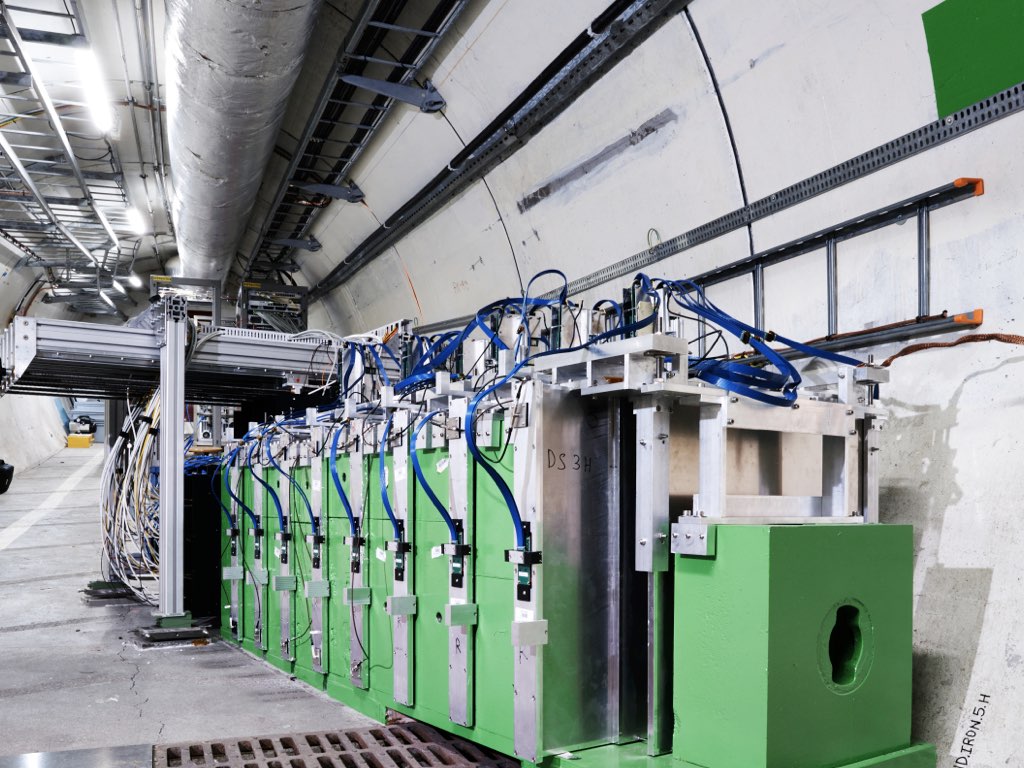First observation of collider neutrinos by SND@LHC and FASER
"The new LHC experiments SND@LHC and FASER reported the first-ever observation of neutrinos produced in a particle collider. The results were announced at the Rencontres de Moriond taking place this week in La Thuile, Valle d’Aosta, Italy. "

Although neutrinos are produced abundantly in collisions at the LHC, because they interact only weakly with matter they go unnoticed across giant detectors such as ATLAS and CMS. In fact, until now neutrinos produced in particle collisions in accelerators had never been directly detected.
Within just nine months of the start of LHC Run 3 and the beginning of their data taking campaigns, the FASER and SND@LHC collaborations changed this picture by announcing the first observations of collider neutrinos at this year’s Moriond (electroweak) conference. FASER observed muon neutrinos and candidate events of electron neutrinos. SND@LHC also reported its first results at Moriond, showing eight muon neutrino candidate events.
While FASER had a little more time to settle, SND@LHC has been installed just in time for the start of LHC Run 3. “We are still working on the assessment of the systematic uncertainties to the background. As a very preliminary result, our observation can be claimed at the level of 5 sigma,” said SND@LHC spokesperson Giovanni De Lellis.
The existence of two new LHC experiments was in fact one of the exciting news about LHC’s Run 3, which took off in July 2022 — particularly at LIP, a founding member of SND@LHC centrally involved in all phases of the process. The mechanical parts of the experiment’s muon system were produced almost entirely by LIP’s Mechanical Workshop in Coimbra. Following intensive production and test assembling, the detector structures were shipped to CERN. The LIP team has then participated in assembly, in-beam testing, commissioning. SND@LHC is installed in the LHC tunnel 480 meters away from the ATLAS interaction point. FASER sits on the opposite side of ATLAS. Both aim at exploring the potential of the LHC as a neutrino factory, as well as searching for new particles.
But how can these relatively small detectors catch neutrinos capable of crossing a huge amount of matter without being stopped? The new experiments cover angular regions much closer to the beams’ direction than the big experiments. Put is simple terms, here the number of neutrinos coming out from the collision region is so high that, even if the interaction probability for each of them is very low, after a while we will be able to detect at least a handful.
But SND@LHC and FASER are not looking at the same thing: in fact, they cover complementary kinematic regions. Nuno Leonardo, PI of the LIP group in SND@LHC tells us more about the difference: "FASER is looking at the very small angles, right along the beam direction, while SND@LHC covers somewhat larger angles. This means FASER has access to a larger flux and can collect their first neutrinos faster". On the longer run, however, he adds, "SND@LHC will have unique conditions to study the three neutrino flavours and perform heavy flavour measurements".
Cristóvão Vilela, a researcher now in the LIP group, is leading the data analysis. The team is thus busy studying all the details about backgrounds, detector performance and so on in order to consolidate these results. And also preparing for the 2023 data taking, which will soon be about to start!



